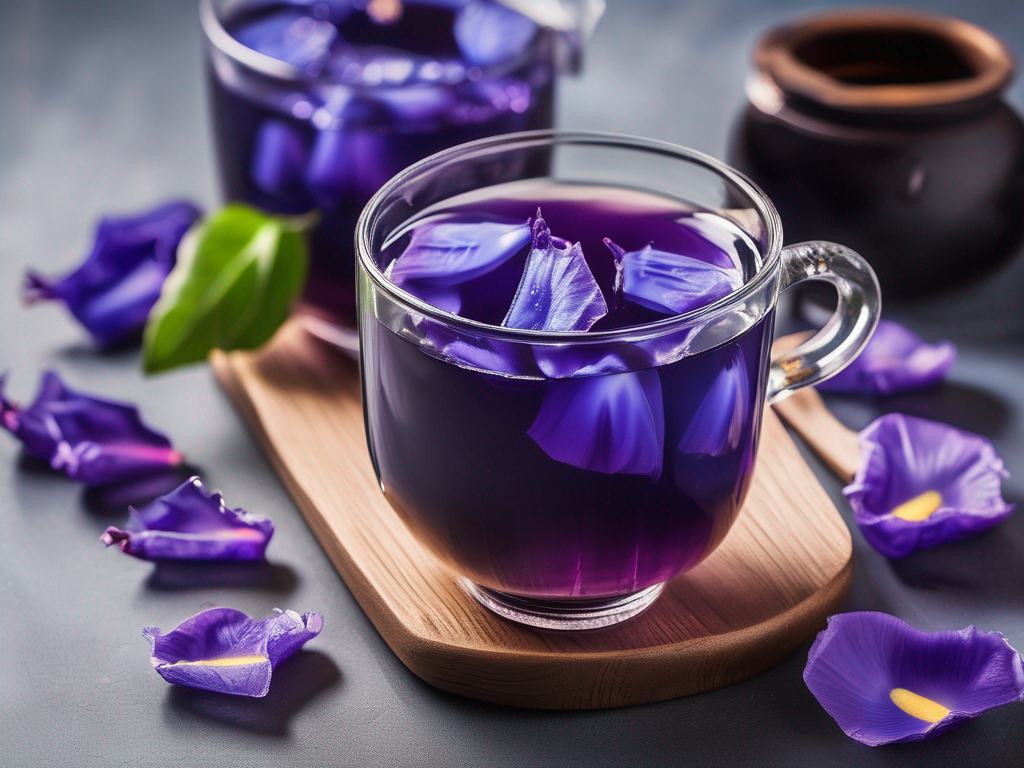
Can You Use Expired Butterfly Pea Flower Tea for Natural Food Coloring in Desserts?
Get Your Free Food Safety Cheat Sheet
30 most common foods with instant answers. Print it and stick it on your fridge—completely free!
Can You Use Expired Butterfly Pea Flower Tea for Natural Food Coloring in Desserts?
Butterfly pea flower tea has gained popularity not only for its unique color-changing properties but also for its potential culinary uses, especially as a natural food coloring agent. However, like any other food product, butterfly pea flower tea comes with an expiration date. But does that mean you have to throw it away once it has expired? Can you still use expired butterfly pea flower tea to create natural food coloring for desserts? Let's explore this topic further. (Butterfly pea flower tea)
Understanding Butterfly Pea Flower Tea
Butterfly pea flower tea is made from the dried flowers of the Clitoria ternatea plant, which is native to Southeast Asia. The tea is known for its striking blue hue, which can change to purple or pink when mixed with acidic ingredients like lemon juice or vinegar. This color-changing ability makes butterfly pea flower tea a popular natural food coloring agent in various dishes and beverages.
Properties of Butterfly Pea Flower Tea
- Rich in antioxidants
- Naturally caffeine-free
- Contains anthocyanins that give it the vibrant blue color
Can You Use Expired Butterfly Pea Flower Tea for Food Coloring?
When a food product reaches its expiration date, it means that the manufacturer can no longer guarantee its quality and safety. While consuming expired butterfly pea flower tea may not necessarily harm you, its color-changing properties and potency may diminish over time. Here are some factors to consider before using expired butterfly pea flower tea for food coloring:
Factors to Consider
-
Color Intensity: Expired tea may not produce vibrant colors as fresh tea due to the degradation of pigments over time.
-
Flavor: The flavor of expired tea may be less pronounced or altered, which can affect the overall taste of your dessert.
-
Nutritional Value: The antioxidant content of expired tea may decrease, affecting its health benefits.
Tips for Using Expired Butterfly Pea Flower Tea for Food Coloring
If you decide to use expired butterfly pea flower tea for food coloring, here are some tips to ensure safety and optimal results:
Tips
-
Storage: Properly store your tea in an airtight container away from heat, light, and moisture to extend its shelf life.
-
Smell and Taste Test: Before using expired tea, check for any unusual odors or flavors that may indicate spoilage.
-
Color Extraction: To enhance the color intensity of expired tea, you can steep it for a longer time or use a higher tea-to-water ratio.
-
Combination with Fresh Tea: For optimal results, consider blending expired tea with fresh butterfly pea flower tea to boost color and flavor.
Safety Precautions When Using Butterfly Pea Flower Tea
While butterfly pea flower tea is generally safe for consumption, it's essential to observe the following safety precautions when using it as a food coloring agent:
Safety Tips
-
Allergies: Individuals with allergies to legumes or pea plants may experience allergic reactions to butterfly pea flower tea.
-
Purity: Ensure you are using organic, pesticide-free butterfly pea flower tea to avoid harmful chemicals in your food.
-
Dosage: Use butterfly pea flower tea in moderation to prevent excessive color staining in your desserts.
Conclusion
In conclusion, while using expired butterfly pea flower tea for natural food coloring in desserts is possible, it's important to consider its quality, flavor, and color intensity. By following proper storage practices, conducting sensory tests, and incorporating fresh tea when needed, you can still enjoy the benefits of butterfly pea flower tea even after its expiration date. Remember to prioritize food safety and quality in all your culinary experiments. [Butterfly pea flower tea](/food/butterfly pea flower tea) can be a versatile and intriguing ingredient in your kitchen, adding not only color but also a touch of exotic flair to your creations. (Butterfly pea flower tea)
Authoritative Food Safety References
These agencies and university labs inform every tip and health precaution we publish.
USDA FoodKeeper – Cold Storage Guidelines
Official refrigerator, freezer, and pantry timelines maintained by the U.S. Department of Agriculture.
Visit USDA FoodKeeperFDA Produce Safety Rule & Grower Guidance
Field-to-fridge handling practices that prevent contamination of fruits, vegetables, and leafy greens.
Visit FDA Produce SafetyCDC Foodborne Illness Prevention Hub
Surveillance-backed guidance on pathogens, symptoms, and steps to reduce foodborne illness risk.
Visit CDC Food SafetyUC Davis Postharvest Technology Center
University research detailing optimal storage atmospheres for produce after harvest.
Visit UC Davis PostharvestPenn State Extension – Home Food Preservation & Safety
Peer-reviewed extension bulletins on safe canning, chilling, and reheating practices.
Visit Penn State ExtensionGet Your Free Food Safety Cheat Sheet
30 most common foods with instant answers. Print it and stick it on your fridge—completely free! Want more? Upgrade to the complete guide with 70+ foods.
Scan your food directly and get instant safety info using our AI-powered camera feature.